How to Choose the Best Solar Motion Light for Your Yard
Selecting the right solar motion light for your yard can transform your outdoor space, enhancing safety, security, and ambiance. With so many options available, understanding your specific needs and the technical aspects of these lights is crucial. This comprehensive guide will walk you through the process of choosing the best solar motion sensor light, covering key features, practical selection steps, installation tips, and maintenance advice to ensure long-term performance.
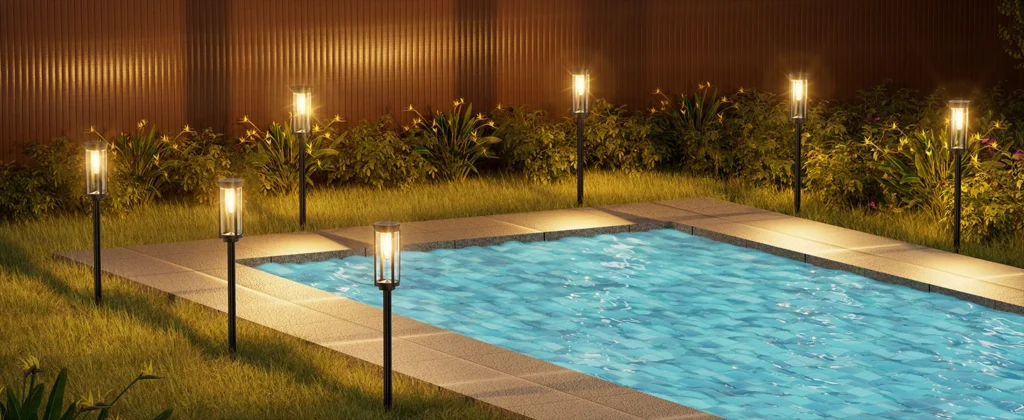
Understanding Your Needs for a Solar Motion Light
Before diving into technical specifications, take a moment to consider your specific requirements. Are you looking to secure your driveway, illuminate a pathway for safe nighttime walking, or create a welcoming glow for your backyard entertainment area? Each use case demands different features from a solar motion light.
- Security Lighting: For deterring intruders, prioritize lights with high-lumen output and sensitive motion sensors. These are ideal for driveways or entry points.
- Pathway Lighting: For safe navigation along walkways, opt for softer, evenly distributed light with a wide sensor range to detect movement from a distance.
- Decorative Lighting: For patios or gardens, choose adjustable solar outdoor lights that balance aesthetics and functionality, offering customizable brightness or color options.
By identifying your primary goal—whether it’s outdoor security, safe navigation, or enhancing ambiance—you can narrow down the features that matter most.
Key Features of Solar Motion Sensor Lights
To make an informed choice, it’s essential to understand the core components of a solar motion light. Here’s a detailed breakdown of the critical features to consider:
1. Motion Sensor Technology
Most solar motion sensor lights rely on Passive Infrared (PIR) sensors, which detect heat emitted by moving objects, such as humans or animals. These sensors are highly effective but vary in sensitivity and range.
- High Sensitivity: Ideal for security lighting, as it detects even subtle movements. However, it may trigger falsely due to pets or swaying branches.
- Low Sensitivity: Better for pathways, reducing unnecessary activations while still ensuring reliable detection.
Look for models with adjustable sensitivity settings to tailor the motion sensor light to your environment. A detection range of 10-26 feet is typically sufficient for most yards, but larger properties may require extended-range sensors.
2. Solar Panel Efficiency
The solar panel is the heart of any solar-powered light, converting sunlight into energy to charge the battery. The efficiency of the panel depends on its material and size:
- Monocrystalline Solar Panels: Made from a single silicon crystal, these are more efficient (up to 20% efficiency) and perform better in low-light conditions, making them ideal for cloudy regions.
- Polycrystalline Solar Panels: Slightly less efficient (15-17%), but more affordable, these work well in sunny climates.
Larger panels generate more power but require more space. For optimal charging, ensure the solar panel is positioned to receive at least 6-8 hours of direct sunlight daily.
3. Battery Types
The battery stores energy to power the solar motion light at night. Two common types are:
- Lithium-Ion Batteries: Offer longer lifespan (up to 3-5 years), faster charging, and better performance in extreme temperatures. They’re ideal for consistent use.
- Nickel-Metal Hydride (NiMH) Batteries: More affordable but have a shorter lifespan (1-2 years) and lower efficiency in cold weather.
Choose models with replaceable batteries to extend the solar light’s lifespan and reduce waste. Check the battery capacity (measured in mAh) to ensure it supports your desired light duration.
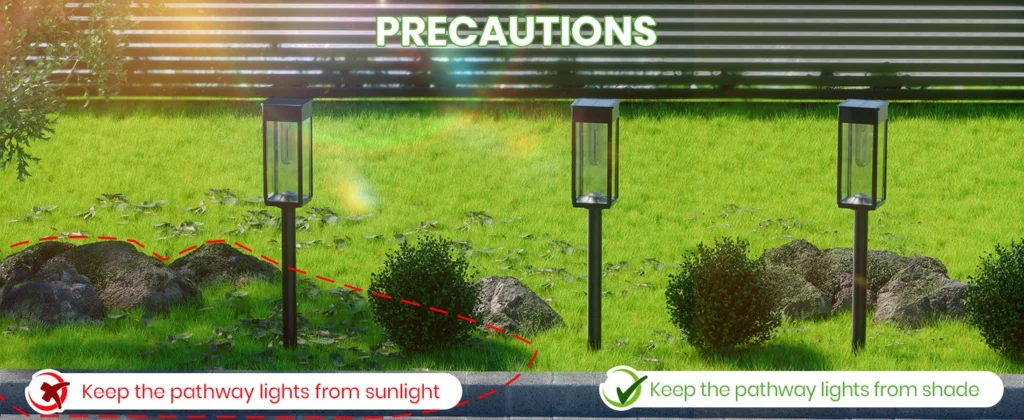
4. Light Source Types
The light source affects both brightness and energy efficiency:
- LED Lights: The go-to choice for solar motion lights, LEDs are energy-efficient, long-lasting (up to 50,000 hours), and provide bright, clear illumination. They’re perfect for both security lighting and ambiance.
- Halogen Lights: Brighter but less efficient, consuming more power and reducing battery life. These are less common in solar outdoor lights due to their high energy demands.
For most applications, LEDs are the best choice, offering a balance of brightness, efficiency, and longevity.
Step-by-Step Guide to Choosing a Solar Motion Light
Follow these practical steps to select the perfect solar motion sensor light for your yard:
Step 1: Determine the IP Rating
The IP rating (Ingress Protection) indicates a light’s resistance to dust and water, crucial for outdoor durability.
- IP65: Highly resistant to dust and heavy rain, ideal for regions with frequent storms or harsh weather.
- IP44: Suitable for light moisture or sheltered areas, such as under eaves, but not for exposed locations.
For most yards, an IP65 solar motion light ensures reliable performance in diverse weather conditions.
Step 2: Check the Installation Height
The height at which you install your solar motion light affects its sensor range and light coverage. A height of 2-3 meters (6.5-10 feet) is optimal for most motion sensor lights, balancing coverage with sensitivity. Too high, and the sensor may miss smaller movements; too low, and the light spread may be limited.
Step 3: Evaluate Light Duration and Modes
Choose a solar motion light with flexible modes to suit your needs:
- Motion-Activated Mode: Lights up only when motion is detected, conserving battery life.
- All-Night Mode: Provides low-level illumination throughout the night, with brighter light on motion detection.
- Dusk-to-Dawn Mode: Stays on at a steady brightness from dusk until dawn, ideal for pathway lighting.
Ensure the light’s battery and solar panel support your chosen mode, especially for all-night operation.
Installation Tips for Different Yard Scenarios
Proper installation maximizes the effectiveness of your solar motion sensor light. Here’s how to position lights for common scenarios:
- Front Door: Install the light above the door frame, about 2 meters high, with the motion sensor angled toward the walkway. This ensures early detection of visitors or potential intruders.
- Driveway: Place lights every 5 meters along the driveway to ensure continuous coverage. Use solar motion lights with a wide detection angle (120° or more) for broader coverage.
- Backyard: Opt for adjustable solar outdoor lights that allow you to direct light toward seating areas or pathways. Models with multiple light heads or adjustable angles are ideal for creating both security lighting and ambiance.
When installing, ensure the solar panel faces south (in the Northern Hemisphere) to maximize sunlight exposure. Avoid shaded areas or obstructions like trees or overhangs.
Maintenance Tips for Long-Lasting Solar Motion Lights
To keep your solar motion light performing optimally, regular maintenance is key:
- Cleaning the Solar Panel: Dust, dirt, or bird droppings can reduce charging efficiency. Wipe the solar panel monthly with a damp cloth to ensure maximum sunlight absorption.
- Checking the Battery: Inspect the battery annually using a multimeter to check voltage. If it drops significantly (e.g., below 3.2V for lithium-ion), replace it with a compatible model to maintain performance.
- Adjusting the Motion Sensor: Seasonal changes, like wind-blown leaves in autumn, can trigger false activations. Adjust the motion sensor’s sensitivity or angle as needed to minimize disruptions.
Unique Considerations for Choosing a Solar Motion Light
Beyond the basics, consider these often-overlooked factors to ensure your solar motion light meets your needs:
- Smart Features: Some modern solar motion sensor lights, like those from Bitpott, offer smart controls via apps or remote controls, allowing you to adjust brightness or sensitivity remotely. These are great for tech-savvy users but may increase costs.
- Eco-Friendly Design: Look for lights with recyclable components or replaceable batteries to reduce environmental impact.
- Warranty and Support: Choose brands with at least a 1-2 year warranty to protect against defects. Bitpott, for example, offers reliable customer support for its solar outdoor lights, ensuring peace of mind.
Conclusion
Choosing the best solar motion light for your yard involves balancing functionality, durability, and aesthetics. By assessing your needs—whether for security lighting, pathway lighting, or decorative ambiance—and understanding key features like motion sensors, solar panel efficiency, and IP ratings, you can make an informed decision. Follow the outlined steps for selection and installation, and maintain your lights regularly to ensure years of reliable performance. With the right solar motion sensor light, your yard will be safer, more functional, and beautifully illuminated.



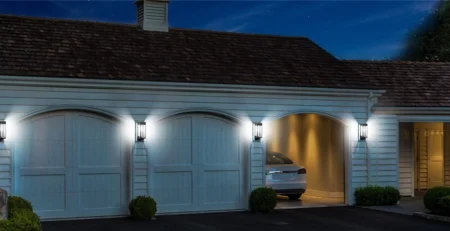
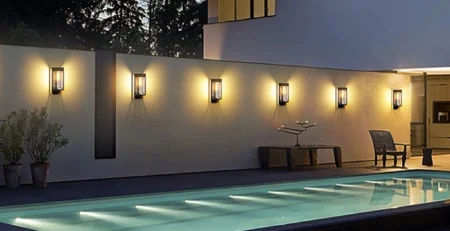

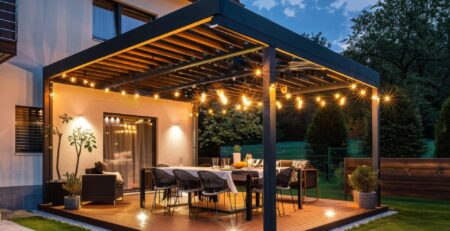
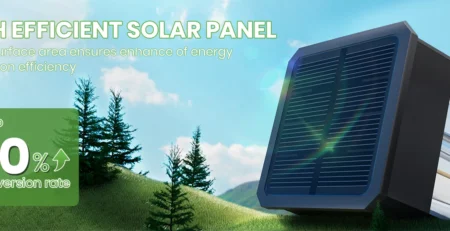
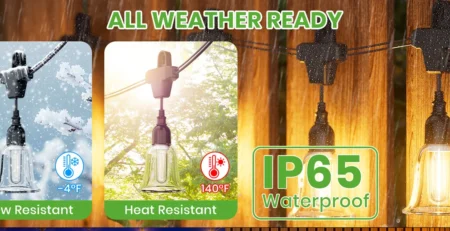

-2-1-450x231.webp)
Leave a Reply